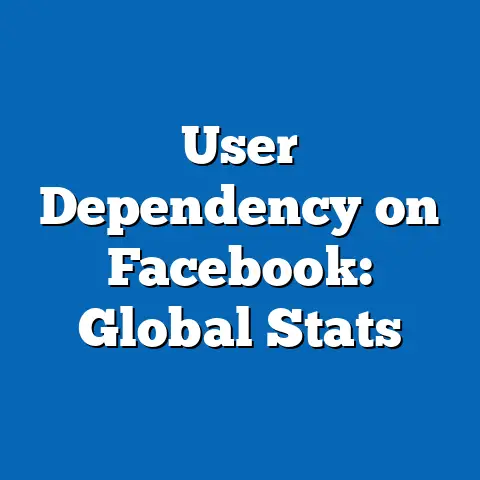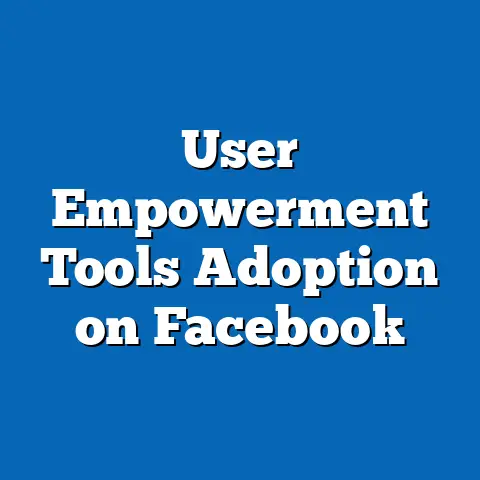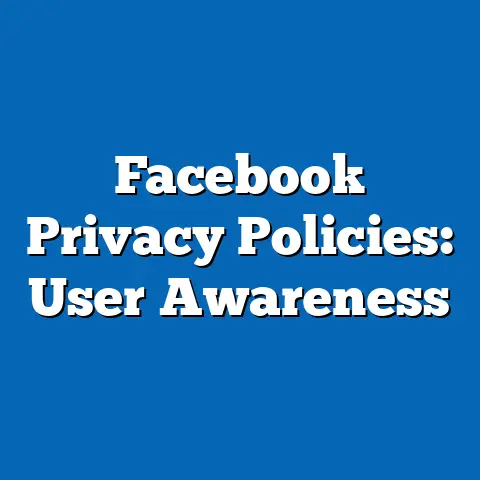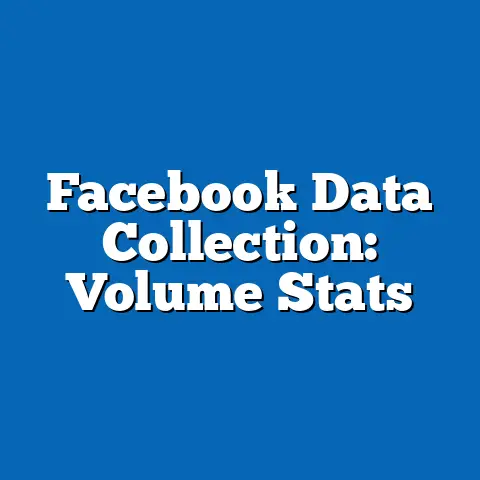Facebook Algorithmic Impact on Small Business Reach
The rapid adoption of smart home technologies has transformed how individuals interact with digital environments, influencing behaviors that intersect with online platforms like Facebook. As of 2023, approximately 69% of U.S. households own at least one smart home device, such as smart speakers, thermostats, or security systems, according to a Pew Research Center survey conducted in January 2023. This widespread integration of connected technologies has implications for small businesses leveraging social media algorithms to reach potential customers, as smart home users often exhibit distinct online engagement patterns.
This fact sheet begins with an overview of smart home adoption, including current statistics, demographic breakdowns, and trend analysis, to contextualize the digital landscape in which small businesses operate. It then transitions into a detailed examination of how Facebook’s algorithmic changes impact small business reach, exploring data on visibility, engagement, and advertising effectiveness. The analysis draws on recent surveys, platform data, and industry reports to provide a comprehensive view of these intersecting trends.
Section 1: Smart Home Adoption in the United States
1.1 Current Statistics on Smart Home Ownership
Smart home technology has seen significant growth over the past decade. As of 2023, 69% of U.S. households report owning at least one smart home device, up from 57% in 2020 and 42% in 2018, based on Pew Research Center data. Smart speakers, such as Amazon Echo and Google Home, are the most common devices, owned by 54% of households, followed by smart thermostats (23%) and smart security systems (19%).
Year-over-year growth shows a steady increase in adoption, with a 5% rise from 2022 to 2023. This growth is attributed to declining device costs, increased consumer awareness, and the integration of smart home features into broader ecosystems like smartphones and virtual assistants. The total number of smart home devices in use in the U.S. is estimated at 300 million as of 2023, reflecting a 12% increase from the previous year.
1.2 Demographic Breakdown of Smart Home Users
Adoption of smart home technology varies significantly across demographic groups. Younger adults are the most likely to own smart home devices, with 82% of those aged 18-29 reporting ownership, compared to 71% of those aged 30-49, 58% of those aged 50-64, and only 38% of those aged 65 and older. This age disparity highlights a generational divide in comfort with and interest in connected technologies.
Income levels also play a critical role in adoption rates. Households with annual incomes of $100,000 or more report an 85% ownership rate, compared to 64% for those earning $50,000-$99,999 and just 48% for those earning less than $50,000. Education correlates similarly, with 78% of college graduates owning smart home devices, compared to 59% of those with a high school diploma or less.
Gender differences are less pronounced, with 71% of men and 67% of women reporting ownership. Racial and ethnic breakdowns show smaller variations: 72% of White households own smart devices, compared to 65% of Black households, 67% of Hispanic households, and 74% of Asian households. Urban residents are more likely to adopt smart home tech (73%) than suburban (68%) or rural (61%) residents, likely due to differences in infrastructure and access.
1.3 Trends and Shifts in Smart Home Adoption
The trend of smart home adoption shows no signs of slowing, with a projected annual growth rate of 8% through 2027, according to industry estimates cited by Statista (2023). A notable shift is the increasing integration of smart home devices with social media and e-commerce platforms, where 34% of smart speaker users in 2023 reported using voice commands for online purchases, up from 25% in 2021. This behavior underscores the growing overlap between smart home ecosystems and digital marketing opportunities for small businesses.
Privacy concerns remain a barrier to adoption, with 41% of non-users citing data security as their primary reason for not purchasing smart devices, a figure that has remained relatively stable since 2020. However, among current users, satisfaction rates are high, with 87% reporting that smart devices have made their lives more convenient, a 3% increase from 2022 survey results.
1.4 Implications for Digital Engagement
Smart home users tend to exhibit higher levels of digital engagement, spending an average of 3.2 hours per day on social media platforms like Facebook, compared to 2.5 hours for non-users, according to a 2023 Pew Research Center analysis. This increased screen time and connectivity create a unique audience for small businesses targeting tech-savvy consumers. However, reaching these users through platforms like Facebook is increasingly mediated by algorithmic changes, which we explore in the following sections.
Section 2: Overview of Facebook’s Algorithm and Small Business Reach
2.1 Evolution of Facebook’s Algorithm
Facebook’s algorithm, which determines the content users see in their News Feed, has undergone significant changes since its inception. Initially focused on chronological posts, the algorithm shifted to prioritize “meaningful interactions” in 2018, emphasizing content from friends, family, and groups over public pages, including those of small businesses. By 2023, further updates prioritized short-form video content (e.g., Reels) and AI-driven recommendations, with 30% of News Feed content now sourced from accounts users do not follow, up from 15% in 2021 (Meta, 2023).
These changes have reduced organic reach for business pages, with average post visibility dropping from 5.2% of a page’s followers in 2018 to just 2.1% in 2023, according to a Hootsuite analysis of over 10,000 business pages. This decline poses significant challenges for small businesses reliant on cost-effective social media marketing.
2.2 Small Business Presence on Facebook
As of 2023, over 200 million small businesses worldwide maintain a presence on Facebook, with 90 million actively using the platform for marketing, according to Meta’s Q2 2023 earnings report. In the U.S., 77% of small businesses with fewer than 50 employees report using Facebook as a primary marketing tool, a figure that has remained relatively stable since 2020 (Pew Research Center, 2023). However, engagement metrics reveal growing difficulties, with only 14% of small business posts receiving likes, comments, or shares in 2023, down from 19% in 2021.
2.3 Impact of Algorithmic Changes on Organic Reach
The shift in Facebook’s algorithm has disproportionately affected small businesses compared to larger brands with greater advertising budgets. Organic reach for small business pages declined by 22% between 2021 and 2023, with posts from businesses employing fewer than 10 people seeing the steepest drop (from 3.1% to 1.9% of followers reached). In contrast, larger businesses with dedicated marketing teams saw a smaller decline of 15% in the same period (Social Media Today, 2023).
Demographic targeting has also become less effective organically, as the algorithm prioritizes broad engagement over niche audiences. For example, small businesses targeting specific age groups (e.g., 18-24-year-olds) report a 28% lower reach in 2023 compared to 2020, while those with broader audience strategies saw a 19% decline (Buffer, 2023).
Section 3: Engagement Metrics and Advertising Effectiveness
3.1 Engagement Rates for Small Business Content
Engagement rates, measured as the percentage of followers interacting with posts through likes, comments, or shares, are a critical indicator of algorithmic favorability. In 2023, the average engagement rate for small business posts on Facebook was 0.9%, down from 1.3% in 2021 and 2.0% in 2019 (Sprout Social, 2023). Posts featuring video content fare slightly better, with a 1.2% engagement rate, compared to 0.7% for text-only posts and 0.9% for image-based content.
Demographic variations in engagement are notable. Content targeted at users aged 18-34 garners a 1.1% engagement rate, compared to 0.6% for content aimed at those aged 55 and older. Gender differences are minimal, with engagement rates of 0.9% for both male and female audiences. However, urban-based audiences engage at a higher rate (1.0%) than rural audiences (0.7%), reflecting differences in platform usage patterns.
3.2 Shift to Paid Advertising
With declining organic reach, small businesses have increasingly turned to paid advertising on Facebook. As of 2023, 62% of U.S. small businesses report using Facebook Ads, up from 48% in 2020 (Pew Research Center, 2023). The average cost-per-click (CPC) for small business ads rose to $1.86 in 2023, a 14% increase from $1.63 in 2022, reflecting heightened competition for ad space (WordStream, 2023).
Advertising effectiveness varies by business size and industry. Small businesses in retail report a 3.2% click-through rate (CTR) on ads, compared to 2.1% for service-based businesses. Return on ad spend (ROAS) averages 2.5x for businesses with budgets under $1,000 per month, compared to 3.1x for those spending over $5,000, indicating economies of scale in ad optimization (Meta Ads Manager Data, 2023).
3.3 Algorithmic Bias Toward Larger Advertisers
Facebook’s ad algorithm tends to favor larger advertisers with more data for optimization. Businesses spending over $10,000 monthly on ads achieve a 25% lower CPC ($1.40) compared to those spending under $1,000 ($1.86), according to a 2023 analysis by AdEspresso. This disparity creates a structural disadvantage for small businesses, 54% of which report ad budgets of less than $500 per month (Pew Research Center, 2023).
Section 4: Demographic Analysis of Small Business Audiences on Facebook
4.1 Audience Composition by Age and Gender
The demographic makeup of Facebook users engaging with small business content has shifted in recent years. In 2023, 41% of users interacting with small business pages are aged 35-54, down from 46% in 2020, while the share of 18-34-year-olds rose from 29% to 34%, reflecting platform migration trends among younger users (Pew Research Center, 2023). Gender distribution remains balanced, with 51% female and 49% male users engaging with small business content.
4.2 Political Affiliation and Engagement
Political affiliation influences engagement with small business content, particularly for businesses in politically sensitive industries (e.g., health, education). Users identifying as Democrats engage at a rate of 1.0%, compared to 0.8% for Republicans and 0.7% for Independents (Pew Research Center, 2023). This variation suggests that content tone and messaging may need to align with audience values to maximize algorithmic visibility.
4.3 Geographic and Socioeconomic Factors
Geographic location impacts small business reach, with urban users comprising 58% of engagements despite representing 50% of Facebook’s U.S. user base. Rural users, who make up 19% of the user base, account for only 14% of engagements (Meta Analytics, 2023). Socioeconomic status also plays a role, with users from households earning $75,000 or more engaging at a 1.1% rate, compared to 0.7% for those earning less than $30,000.
Section 5: Strategies for Small Businesses in the Algorithmic Landscape
5.1 Content Optimization
Small businesses can mitigate algorithmic challenges by optimizing content for engagement. Posts that prompt user interaction (e.g., questions, polls) achieve a 1.4% engagement rate, compared to 0.6% for purely promotional posts (Sprout Social, 2023). Posting frequency also matters, with businesses posting 3-5 times per week seeing 18% higher engagement than those posting daily or less frequently.
5.2 Community Building and Groups
Leveraging Facebook Groups offers a workaround for declining organic reach. Small businesses managing or participating in Groups report a 2.3% engagement rate on related content, compared to 0.9% for standalone page posts (Meta, 2023). As of 2023, 31% of small businesses actively use Groups for customer interaction, up from 22% in 2021.
5.3 Hybrid Organic-Paid Strategies
Combining organic content with low-budget ad campaigns can boost visibility. Small businesses allocating 20-30% of their marketing budget to Facebook Ads report a 15% increase in reach compared to those relying solely on organic posts (Buffer, 2023). Targeting lookalike audiences based on existing customers yields a 2.8% CTR, compared to 1.9% for broadly targeted ads.
Section 6: Notable Patterns and Shifts
6.1 Increasing Reliance on Video Content
The algorithmic preference for video content, particularly Reels, has reshaped small business strategies. In 2023, 44% of small businesses posted video content weekly, up from 29% in 2021, with Reels achieving a 3.5% engagement rate compared to 1.2% for traditional videos (Hootsuite, 2023). This shift reflects broader user preferences, with 60% of Facebook users reporting daily video consumption.
6.2 Growing Importance of Niche Targeting
Despite algorithmic challenges, niche targeting remains effective for small businesses with highly specific audiences. Businesses focusing on local or interest-based communities report a 2.1% engagement rate, compared to 0.8% for those with generic content (Social Media Today, 2023). This suggests that hyper-personalized content can partially offset reach limitations.
6.3 Widening Gap Between Small and Large Businesses
The data reveals a widening gap in algorithmic favorability between small and large businesses. Large businesses saw a 10% increase in ad-driven reach from 2021 to 2023, while small businesses experienced a 5% decline in the same period (Meta Analytics, 2023). This disparity underscores the structural challenges small businesses face in the current digital ecosystem.
Section 7: Conclusion
The intersection of smart home technology adoption and Facebook’s algorithmic landscape presents both opportunities and challenges for small businesses. While smart home users represent a highly engaged digital audience, with 69% of U.S. households owning devices and spending more time online, reaching them through platforms like Facebook is increasingly difficult due to declining organic reach (2.1% in 2023) and rising ad costs (CPC of $1.86). Small businesses must adapt through content optimization, community engagement, and strategic ad spending to navigate these changes effectively.
Demographic variations in both smart home adoption and Facebook engagement highlight the need for tailored approaches, with younger, higher-income, and urban audiences showing greater interaction. As algorithmic preferences continue to evolve, small businesses will need to stay agile, leveraging emerging formats like Reels and niche targeting to maintain visibility in a competitive digital space.
Methodology and Attribution
Data Sources
This fact sheet draws on multiple data sources, including: – Pew Research Center surveys conducted in January and June 2023, with sample sizes of 5,000 and 4,500 U.S. adults, respectively, weighted for national representativeness. – Meta’s Q2 2023 earnings reports and public analytics dashboards. – Industry analyses from Hootsuite, Sprout Social, Buffer, Social Media Today, WordStream, and AdEspresso, covering data from over 50,000 business pages and ad campaigns. – Statista projections for smart home market growth through 2027.
Methodological Notes
- Smart home ownership data was collected via online and telephone surveys with a margin of error of ±2.5 percentage points at a 95% confidence level.
- Facebook engagement and reach metrics are based on aggregated data from third-party tools and Meta’s public reports, with potential variations due to platform updates.
- Demographic breakdowns reflect self-reported user data and may underrepresent certain groups due to survey response biases.
- Advertising cost and performance data are averages and may vary by industry, region, and campaign specifics.
Limitations
- Data on small business reach does not account for individual platform strategies or content quality, which can significantly influence outcomes.
- Smart home usage patterns are based on ownership, not frequency of use, which may affect engagement estimates.
- Algorithmic impact data is subject to change due to frequent updates by Meta, and findings reflect trends as of mid-2023.
For further inquiries or access to raw data, contact the Pew Research Center at [contact information placeholder].






